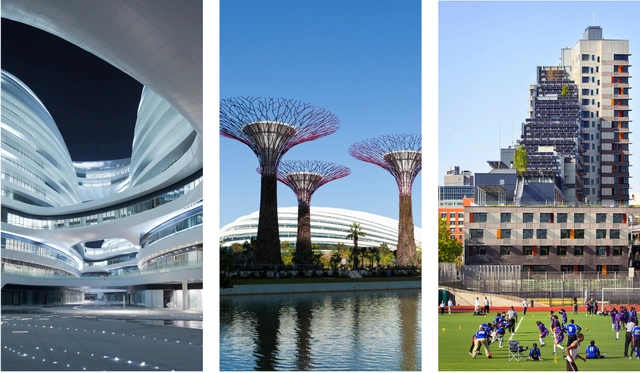
The RIBA has announced three projects—two located in Asia and one in the United States—for the shortlist of the RIBA’s Lubetkin Prize. Named for Berthold Lubetkin, a Georgian-born architect, the prize celebrates the work of RIBA members building outside of the UK. Zaha Hadid’s Galaxy Soho, Grimshaw’s Via Verde and Wilkinson Eyre’s Cooled Conservatories will face off for the honor; the winner of this year’s Lubetkin Prize will be announced (along with the winner of the prestigious Stirling Prize) on September 26th in London.
Angela Brady, RIBA President, said:
"The 2013 RIBA Lubetkin Prize shortlist features three exceptionally innovative projects that meet three very different urban challenges. From the blueprint for New York affordable housing and the creation of an impressive new shopping district in central Beijing to Singapore’s new sustainable gardens, these are all extremely clever solutions. These cutting-edge schemes show the leading role that architects play in delivering visionary new thinking about urban issues, and illustrate why UK creative talent has such recognition around the world."
More on the shortlisted projects after the break…























































.jpg?1365618202&format=webp&width=640&height=580)



.jpg?1365618206)
.jpg?1365618202)